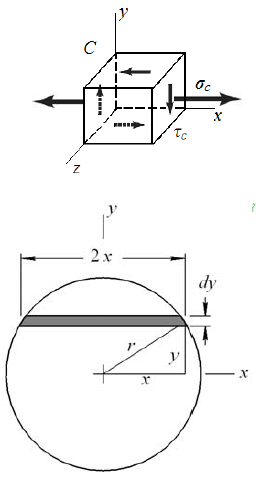A cantilever beam with a 1-in-diameter round cross section is loaded at the tip with a tr verse
force of 1000 lbf, as shown in the figure. The cross section at the wall is also shown, with
labeled points A at the top, B at the center, and C at the midpoint between A and B. Study the
significance of the tr verse shear stress in combination with bending by performing the following steps.
(a) Assume L=10 in. For points A, B and C sketch three-dimensional stress elements, labeling the coordinate directions and showing all stresses. Calculate magnitudes of the stresses on the stress elements. Do not neglect tr verse shear stress. Calculate the maximum shear stress for each stress element.
(b) For each stress element in part ( a), calculate the maximum shear stress if the tr verse shear stress is neglected. Determine the percent error for each stress element from neglecting the tr verse shear stress.
( c ) Repeat the problem for L=4,1 and 0.1 in. Compare the results and state any conclusions regarding the significance of the tr verse shear stress in combination with bending.


